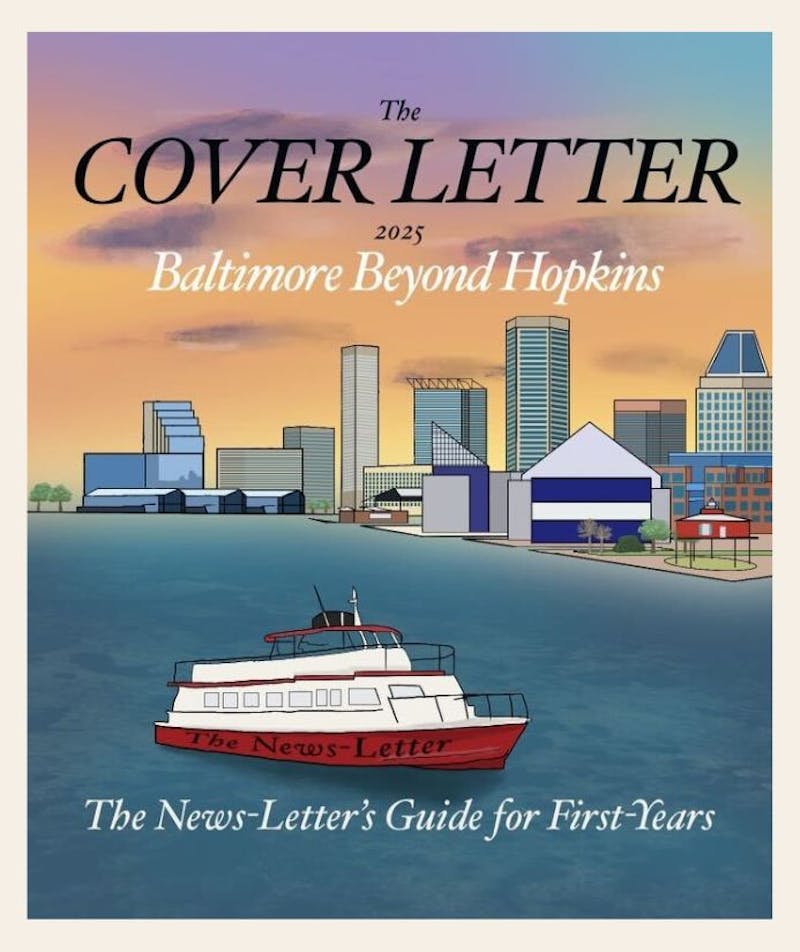Daily, you inattentively walk by the many monuments and memorial statues that are scattered about the Homewood campus. Each of these structures has a story that tells a unique piece of Hopkins history. However, despite what these monuments contribute to campus, there are probably very few individuals who can name them all.
Perhaps the most well known statue on the Homewood campus, the Johns Hopkins Monument is located at the corner of Charles and 33rd Streets in front of the Mattin Center. Created in 1935 by local artist Hans Schuler, the sculpture consists of two human figures, one male, one female, flanking the bust of the University's founder. The man is said to represent knowledge and the University and the woman is symbolic of the healing of the hospital. The Hopkins monument was located in the middle of the intersection between Charles and 34th streets until 1955 and was relocated in response to traffic accidents.
Other statues created in memorial to some of the University's early and prominent contributors include those of Daniel Coit Gilman, Hopkins' first president, and William A. Welch, the first dean of the School of Medicine. These structures, located outside of Shriver, recently received some big time publicity when scenes from the Chris Rock flick Head of State were filmed on the hall's front steps. A bust of Isaiah Bowman, president of the University during the Depression, is also located in a niche under the porch of Shriver.
Also in close proximity to Shriver Hall is the Give Peace a Chance monument. Donated by the Class of 1970, the welded aluminum sculpture was created by Writing Seminars major and Class of 1970 graduate Theodore Scuris. In the words of John Marron, president of the Class of 1970, the structure was constructed with the goal of relating the "Georgian style of architecture to the Twentieth Century."
Another statue with a student focus, is Spirit of Music located next to the Mattin Center overlooking the sculpture garden at the BMA. Dedicated in November, the statue serves as a memorial for Rex Chao, a Hopkins student who was tragically shot and killed by another student in 1996. The bronze statue depicts Chao, violin in hand, smiling and ready to play. Chao was said to be a talented violinist, playing in both the Peabody and Hopkins symphonies. His classmates, including girlfriend Suzanne Hubbard, helped to raise the $60,000 to pay for the statue to be designed. The students commissioned New England artist Jud Hartmann, to create the two-thirds life-size monument. This artist is also responsible for the statue of Native Americans in front of the Lacrosse Hall of Fame adjacent to the Homewood campus.
Other statues on the athletic side of campus are located outside of the original Newton H. White Athletic Center. The statues, two athletes, were sculpted by Professor Joseph Brown of Princeton, a former boxer, who is also responsible for sculptures outside of the Spectrum and Veterans Stadium, both in Philadelphia.
Located near the tennis courts and the rear entrance to the AMRs is a memorial created by Schuler. It recognizes the contributions made to the University by Sidney Lanier, an English lecturer at Hopkins form 1879 to 1891. Lanier was a well-known Southern poet of the post-Civil war period. In addition to his work at Hopkins, Lanier was an accomplished flutist and was the flute lead in the Peabody Conservatory Orchestra. The memorial was unveiled in 1942 on Lanier's birthday.
Another structure received its unveiling at on an important day. The Centennial Sculpture located in the Keyser Quadrangle (you've surely noted it on M level) was unveiled by Milton S. Eisenhower to mark the 100th Anniversary of the University's founding. The 31 steel bars that comprise the structure were assembled by sculptor David Brown and donated by Robert H. Levi, a Hopkins trustee and vice-chairman of Mercantile-Safe Deposit Trust Company.
Lastly, the University honors former U.S. president and Hopkins alumnus Woodrow Wilson with a bust located inside Garland Hall. It is positioned near the University's debate trophies as Wilson was the founder of the debate team.


